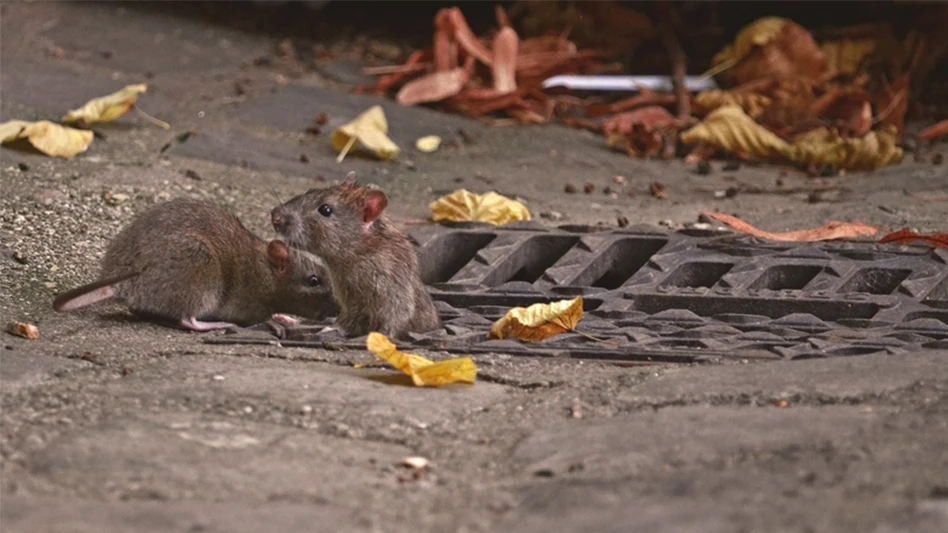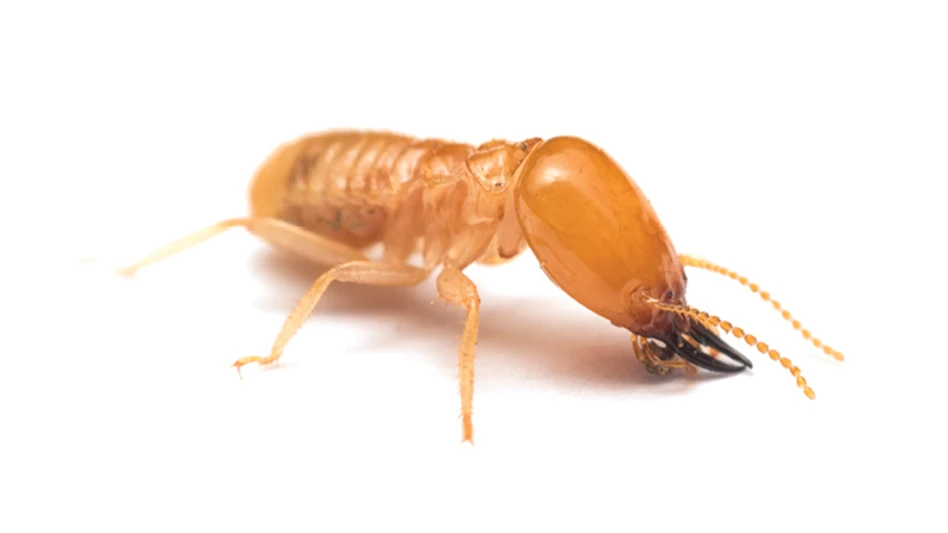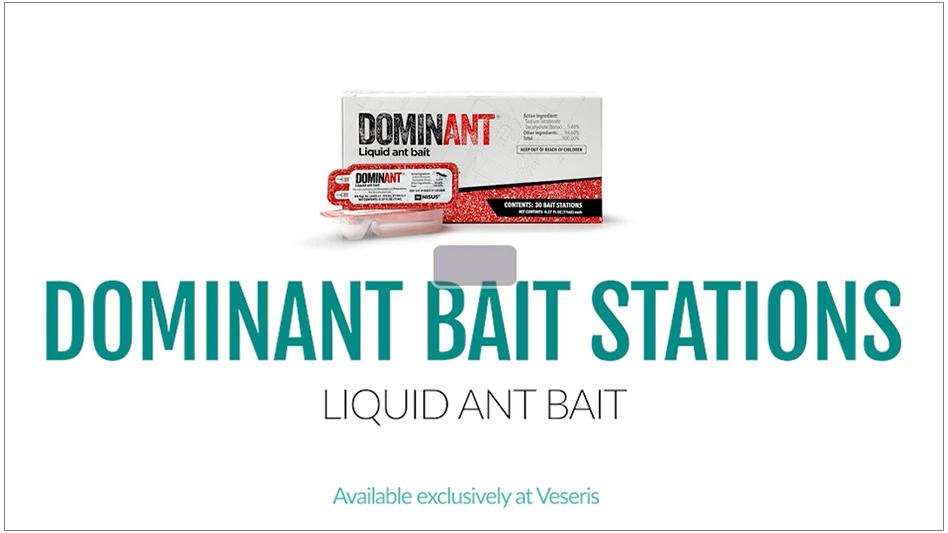The Clorox Company has teamed up with Rhône-Poulenc Ag Company to offer the structural pest control industry a new chemistry with a unique mode of action.
Fipronil, manufactured by Rhône-Poulenc, of Research Triangle Park, N.C., is likely to have many applications in the pest control industry. Its availability represents Rhône-Poulenc’s decision to enter into the professional pest control market. The company is the North American unit of one of the world’s leading manufacturers of crop protection products. The new product is now hitting the market in a line of bait stations from the Maxforce Professional Products division of Clorox.
Fipronil is a highly active, broad-spectrum insecticide from the phenyl pyrazole family, and Clorox has an exclusive license to use fipronil in some product forms for cockroach and ant control. Scientists working at Rhône-Poulenc’s research station in Ongar, England, discovered fipronil and identified its insecticidal properties in 1987. Used at low doses, the active ingredient is highly effective against a broad range of insect pests.
NEW PRODUCTS FROM MAXFORCE. Maxforce FC, the product containing fipronil, is a bait that offers both long-term control and faster action than demonstrated by other ant and cockroach bait products, according to the manufacturer. Three second-generation bait products are to be offered under the Maxforce FC brand name: Maxforce FC Professional Insect Control Small Roach Killer Bait Stations, Maxforce FC Professional Insect Control Ant Killer Bait Stations, and Maxforce FC Professional Insect Control Large Roach Killer Bait Stations. The product line is to be introduced to the market at the National Pest Control Association convention held this month. As of press time, EPA registration for Maxforce FC products had been received in all states except New York, where registration was expected shortly.
According to Maxforce national sales and marketing manager, Gordon Morrison, Maxforce FC bait stations will replace the original Maxforce bait stations containing the active ingredient hydramethylnon. Maxforce’s Roach Killer Gel Bait will still contain hydramethylnon, although a formulation of gel bait containing fipronil is now under development, Morrison said.
Like the original Maxforce bait stations, Morrison said, Maxforce FC stations are a convenient-to-use, environmentally friendly control tool. “One of the factors that has been a driving force behind the popularity of baits,” he explained, “is that much less active ingredient ends up in the environment. The exposure to technicians, as well as to customers, is substantially reduced.” The only drawback in the use of baits, Morrison observed, has been the longer amounts of time typically needed for significant results to be seen. With Maxforce FC products, he said, this drawback is also eliminated. “Now we’re offering a superior technology which will provide very good long-term control, as well as the immediate population crash, in just a matter of days, instead of weeks,” Morrison said. Field tests show that Maxforce FC provides significantly faster control of German cockroaches, American cockroaches and ants than do bait stations containing hydramethylnon, according to Morrison.
MODE OF ACTION. Fipronil’s mode of action sets it apart from most commercial insecticides currently on the market. Fipronil disrupts the insect’s central nervous system by blocking the passage of chloride ions through the GABA receptor, an inhibitor of the central nervous system. This causes hyperexcitation of contaminated insects’ nerves and muscles. While many classes of insecticides affect the central nervous system, no other class has this specific effect.
“The mode of action is considerably different,” noted Dr. Michael Rust, an extension entomologist with the University of California-Riverside. “In all of our testing with fleas, cockroaches and ants, it really does show some unique features.” For instance, Rust added, fipronil is very active against ticks, which is unusual among many of the veterinary products on the market. Another product benefit is its high activity against insect pests, such as ants, Rust pointed out. “We’ve been able to show that we’re getting a higher kill of workers,” he explained, “and we’re getting better kill of queens.” And fipronil is as effective as hydramethylnon against roaches, he said. Furthermore, because the product is highly active, it is used at very low concentrations, a definite benefit for pest control professionals and customers alike “It’s active at extremely low concentrations,” said Rust, “which is making it a good candidate for the control of roaches, ants and stinging insects.”
Because of fipronil’s effectiveness against insects, Maxforce FC is formulated with significantly lower levels of active ingredient than Maxforce’s original hydramethylnon formulations. These lower concentrations result in less pesticide being applied in the environment. At the concentrations it is used, the ready-to-use Maxforce FC baits’ toxicity to animals is comparable to the original Maxforce. The fipronil ingredient itself, while very effective against target insects, in fact has relatively low toxicity to nontarget animals. For these reasons, Maxforce FC bait stations are labeled for use in pet shops and zoos, among other locations. The active ingredient has demonstrated toxicity to some aquatic and bird species, but in its current formulation does not represent a threat to these or other animals.
Unlike other bait products, Maxforce FC kills cockroaches and ants in two ways: by ingestion and by contact. But as with the original Maxforce, one contaminated roach or ant will still kill many others. A nonvolatile product, Maxforce FC releases no airborne active ingredient during use. This reduces the chemical exposure to applicators, customers and the environment in general. As with hydramethylnon, there is no known resistance to fipronil, and Maxforce FC stations are child-resistant. And based on lifetime laboratory feeding studies in rodents, fipronil is not considered to be a human carcinogen.
The product is also nonrepellent. Roaches and ants have been observed standing on deposits of technical fipronil with no signs of being repelled. Maxforce FC will maintain the same long-term control provided by the original Maxforce products. Exposed, un-consumed bait stations will remain effective for at least a year. When applied, the bait stations will remain effective over a wide range of temperatures, in dry or humid air, and when exposed to water.
Maxforce FC small roach bait stations are labeled for German cockroaches and for use indoors and outdoors anywhere roaches are a problem, including commercial food handling establishments. Maxforce FC large roach bait stations are labeled for control of peridomestic cockroaches, including American, smokybrown and oriental roaches, and for use indoors and outdoors. Maxforce FC ant bait stations are labeled for use against Argentine, pharaoh, pavement, acrobat, cornfield, thief, crazy, odorous, and carpenter ants, and for use indoors and outdoors.
ON THE HORIZON. The research on this promising new active ingredient continues. Development work is ongoing with several different formulations for the control of ants, cockroaches, fleas and ticks, houseflies, mosquitoes, termites and other pests.
Currently, Rhône-Poulenc is conducting field trials for the use of fipronil for subterranean termite control. According to Manny Martinez, business manager for Rhône-Poulenc, the company will likely introduce a termiticide containing fipronil, as well as other general pest control products within the next year.
Researchers at Clorox are also studying additional uses of the active ingredient in bait products, particularly those which might be targeted to specific species of insects. “We’re working on some very unique delivery systems and have some very innovative products on the horizon,” Morrison said. He added that new bait products containing fipronil may be targeted for certain species of insects, an interesting development for the industry. “In light of this new technology, he added, “it will be more important for technicians to be able to distinguish one insect species from another when these new products hit the marketplace.”
Considering the success that roach and ant bait stations have had over the years, it’s likely the new line of products from Maxforce, as well as other new products containing fipronil, will quickly become tools in the pest control arsenal. And as is always the case, pest control professionals will ultimately determine how useful these new products will be to them in the years ahead.

Explore the October 1997 Issue
Check out more from this issue and find your next story to read.
Latest from Pest Control Technology
- ActiveGuard Mattress Liners Offered to Philadelphia Fans Traveling to The Big Game
- Pest Index Increased 11 Percent YOY in December
- Hawx Pest Control Earns QualityPro Accreditation
- Envu Announces Lichtenstein as Chairman of Board of Directors
- Spider Expertise, Cockroach Species, AI Tools for Disease Transmission Hot Topics at Purdue Conference
- Rose Pest Solution Promotes Kandler to District Manager of Columbus (OH) Office
- Webinar: Maximizing Cash Flow — Key Strategies for Business Growth
- WorkWave Announces Wavelytics





